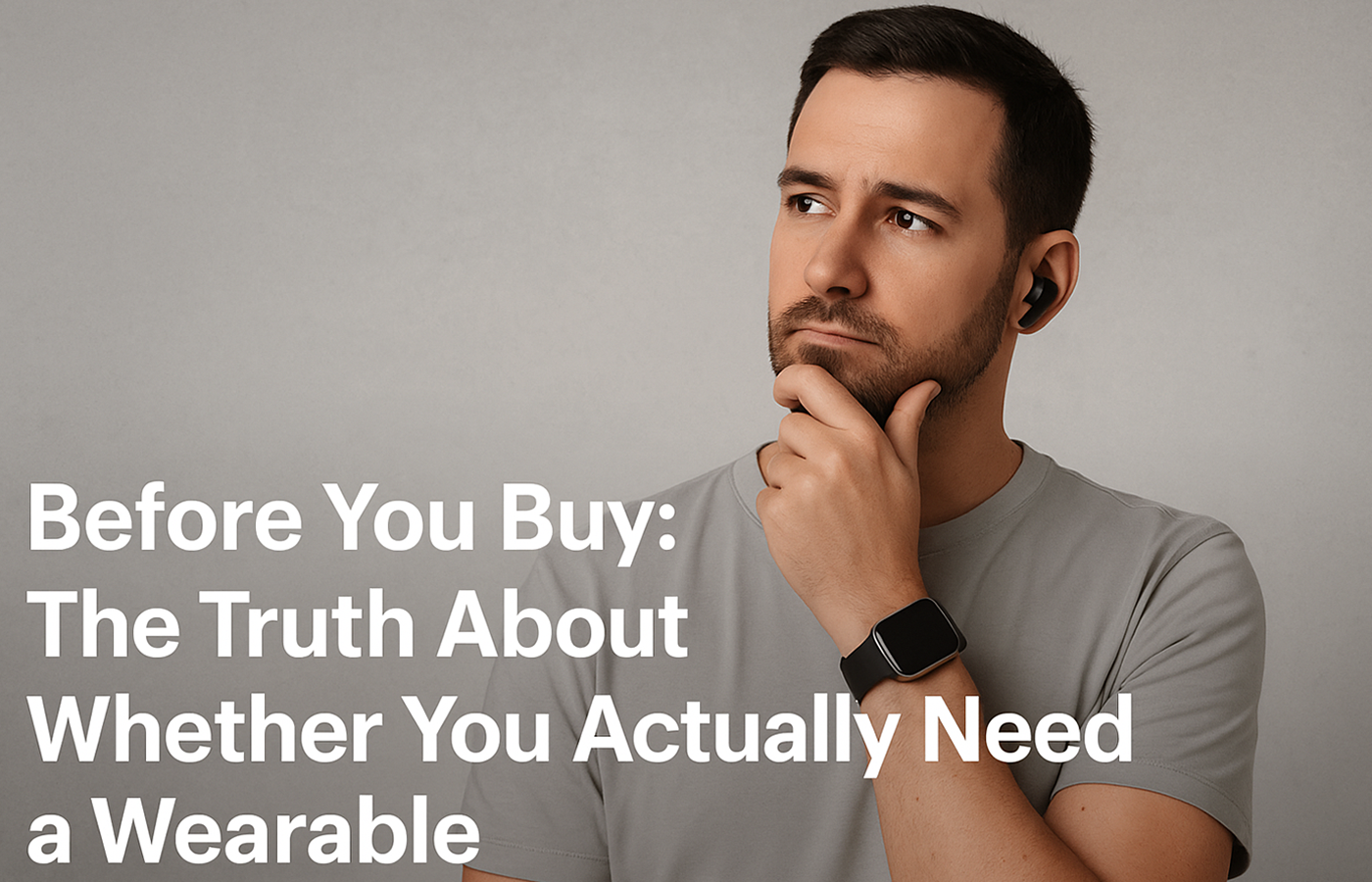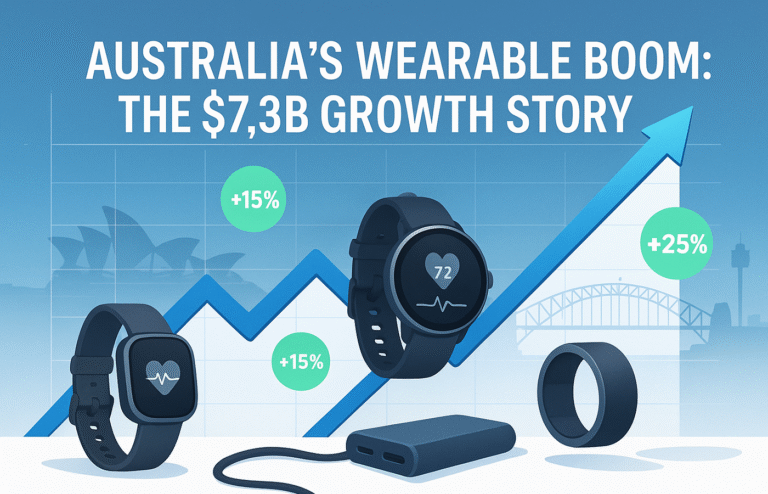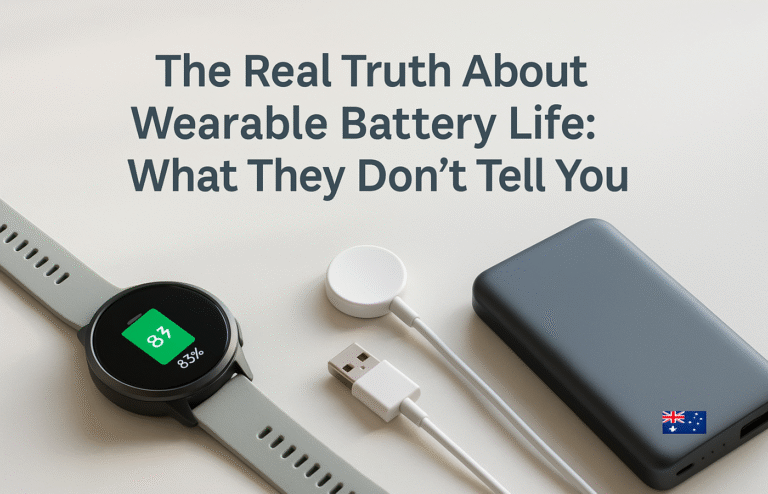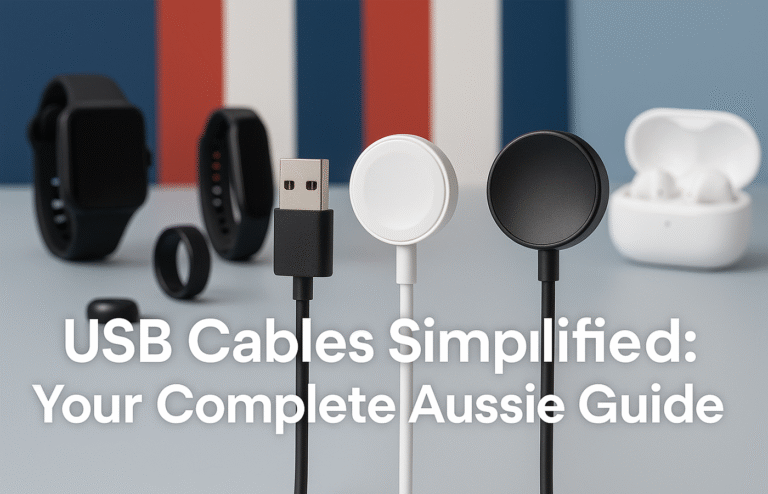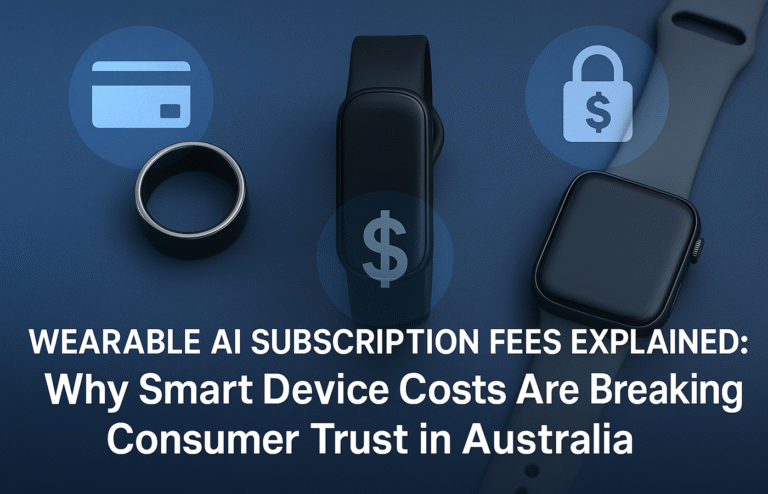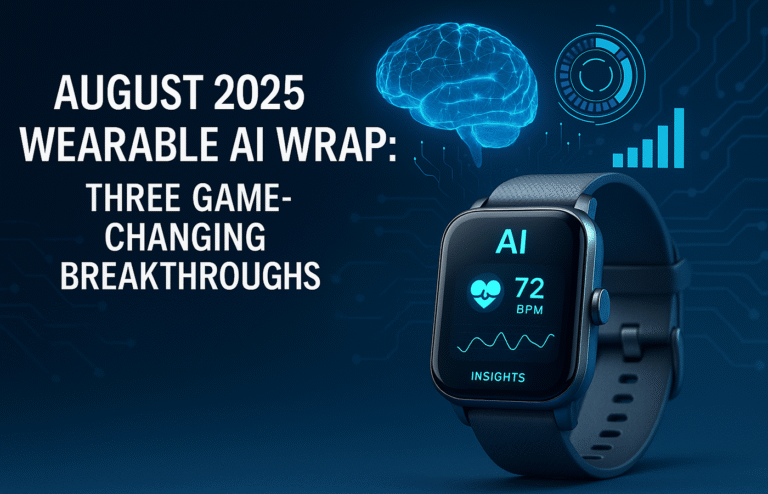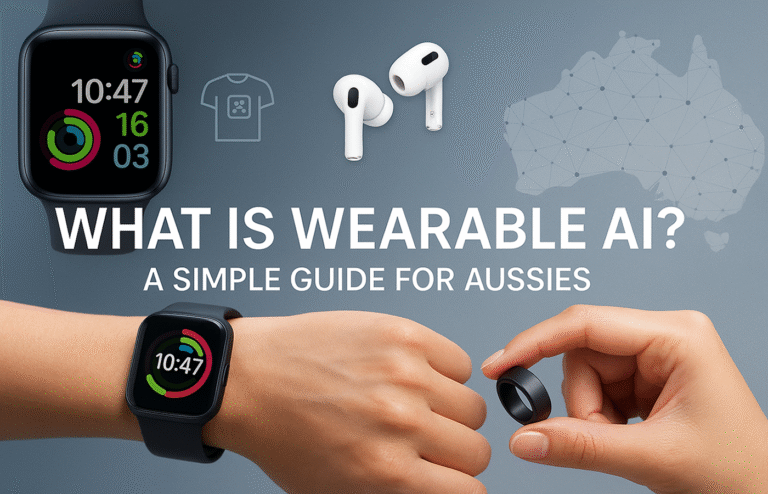Do You Need a Wearable? Honest Assessment Guide Before Spending $200-2,000 AUD
Research shows 30% of wearables are abandoned within six months. This honest assessment helps determine whether you genuinely need one versus falling for marketing promises.
Skip If You:
● Already satisfied with smartphone health apps and step counters
● Struggle with motivation using simple tools or have irregular routines
● Frequently forget to charge devices or face budget constraints with ongoing costs
● Expect devices to automatically improve health without behavioural changes
Buy If You:
● Have specific health conditions requiring continuous monitoring (diabetes, heart conditions, sleep disorders)
● Work in professions needing hands-free functionality (healthcare workers, fitness trainers, outdoor professionals)
● Already established fitness routines with genuine performance goals requiring detailed metrics
● Lifestyle genuinely benefits from hands-free connectivity (parents, mobility challenges)
Key Reality Check: Wearables amplify existing habits rather than creating new ones. Consider total ownership costs including accessories, subscriptions, and replacements.
Before You Buy: The Truth About Whether You Actually Need a Wearable
Let’s be honest: the wearable AI market is absolutely flooded with marketing promises that sound almost too good to be true. From smartwatches that claim to revolutionise your health to AI necklaces that promise to change your life, it’s easy to get caught up in the excitement. However, before you spend anywhere from $200 to $2,000 AUD on the latest wearable technology, there’s one crucial question you need to answer honestly: do you actually need one?
This guide isn’t here to sell you anything. Instead, it’s designed to help you make a genuinely informed decision that could save you hundreds of dollars whilst ensuring that if you do invest, it’s for the right reasons. Sometimes the best purchase is the one you don’t make.
The Reality Check: Marketing vs Your Actual Life
Wearable companies spend millions creating compelling advertisements showing perfectly fit people seamlessly integrating technology into their ideal lifestyles. Meanwhile, reality often looks quite different. Research shows that approximately 30% of wearable devices are abandoned within six months of purchase, frequently ending up in drawers alongside other well-intentioned fitness equipment.
The disconnect happens because marketing focuses on aspirational use cases rather than honest assessments of whether the technology actually solves problems you currently have. Therefore, let’s start with a practical evaluation of your real situation.
Self-Assessment Framework: Know Yourself First
Your Lifestyle Evaluation
Activity Level and Fitness Goals Are you genuinely committed to fitness, or are you hoping a device will magically motivate you? If you’re already active and tracking workouts, wearables can enhance your efforts. However, if you’re hoping technology will create motivation that doesn’t currently exist, you’re likely to be disappointed.
Ask yourself: Do you currently use your smartphone’s built-in health apps? If not, a more sophisticated device probably won’t change your habits.
Work Environment Considerations Your professional setting significantly impacts wearable utility. Healthcare workers benefit enormously from devices that monitor stress and fatigue during 12-hour shifts. Similarly, outdoor workers might appreciate GPS tracking and environmental monitoring features.
Conversely, office workers often find that smartphone notifications already provide adequate connectivity, making additional wearable alerts redundant rather than helpful.
Health Monitoring: Needs vs Wants Distinguish between genuine health requirements and general curiosity. If you have specific conditions like diabetes, heart rhythm issues, or sleep disorders, wearables can provide valuable medical insights. However, if you simply want to “get healthier” without specific goals, basic smartphone apps might suffice.
Technology Comfort and Smartphone Habits Wearables integrate deeply with smartphone ecosystems. If you struggle with smartphone complexity or rarely use apps beyond calls and messages, adding another connected device will likely create frustration rather than convenience.
Budget Reality Check
Consider the total cost of ownership, not just the initial purchase price. Premium smartwatches range from $400-$1,200 AUD, but ongoing costs include replacement bands ($50-$150), screen protectors ($20-$40), charging accessories ($30-$100), and potential repairs or upgrades every 2-3 years.
For many Australians, this represents a significant investment that should deliver clear, measurable value.
Problem-Solution Matching: What Wearables Actually Do Well
Genuine Strengths
Wearables excel at continuous monitoring without conscious effort. They’re particularly effective for tracking sleep patterns, monitoring heart rate during exercise, providing medication reminders, and offering hands-free notifications during activities where phones are impractical.
Additionally, they provide excellent value for professionals requiring discrete health monitoring, people with specific medical conditions needing regular tracking, and individuals with established fitness routines seeking detailed performance metrics.
Marketing Myths vs Reality
Despite claims, wearables cannot accurately diagnose medical conditions, replace professional healthcare advice, or automatically improve your health without behavioural changes. They also don’t measure stress as precisely as advertised, and their battery life often falls short of marketing promises, particularly with heavy AI feature usage.
Furthermore, many touted AI features require constant internet connectivity and cloud processing, making them less reliable than traditional smartphone functions.
Honest Scenarios: When to Skip the Purchase
You Probably Don’t Need a Wearable If:
Your smartphone already meets your tracking needs. Modern phones include sophisticated health apps, step counters, and workout tracking. If these satisfy your current requirements, upgrading to a wearable might be unnecessary.
You’re not consistently active or health-focused. Wearables amplify existing habits rather than creating new ones. If you struggle with motivation using simple tools, complex devices won’t solve the underlying issue.
You have irregular routines or forget to charge devices. Wearables require daily charging and consistent wearing to provide value. If you frequently forget to charge your phone or have unpredictable schedules, adding another device creates stress rather than convenience.
Budget constraints make ongoing costs problematic. Beyond the initial investment, wearables often require accessories, app subscriptions, and eventual replacements. If money is tight, there are more cost-effective ways to improve health and fitness.
When Wearables Make Genuine Sense
You Would Likely Benefit If:
You have specific health conditions requiring continuous monitoring. Conditions like diabetes, heart arrhythmias, or sleep disorders benefit significantly from consistent tracking that wearables provide more conveniently than traditional methods.
Professional requirements make hands-free functionality essential. Healthcare workers, fitness trainers, and outdoor professionals often find wearables invaluable for monitoring without compromising their ability to perform job duties.
You have genuine fitness goals with established routines. If you’re already committed to regular exercise and goal-setting, wearables can provide valuable performance insights and motivation through detailed metrics.
Your lifestyle genuinely benefits from hands-free connectivity. Parents with young children, people with mobility challenges, or those frequently engaged in activities where phones are impractical often find significant value in wearable notifications and quick responses.
Australian Context: Local Considerations
Healthcare Integration
Australia’s healthcare system doesn’t fully integrate with consumer wearables for official medical records. While devices can provide useful personal data, don’t expect seamless integration with your GP or specialist appointments without manual data sharing.
Professional Restrictions
Many Australian healthcare facilities, secure work environments, and some schools restrict wearable devices due to privacy and security policies. Check your workplace regulations before investing in professional-use devices.
Climate Factors
Australia’s diverse climate affects device performance and comfort. Extreme heat can impact battery life and skin comfort, while high humidity may affect sensor accuracy. Consider whether you’ll consistently wear the device during harsh weather conditions.
Value Proposition
With the Australian dollar and import duties, wearables often cost 20-30% more than US pricing. Ensure the features you’ll actually use justify the premium local pricing.
Alternative Solutions Worth Considering
Smartphone Apps
Apps like MyFitnessPal, Strava, and Apple Health provide sophisticated tracking without additional hardware costs. Many offer premium features for $5-$15 monthly, significantly less than wearable ownership costs.
Traditional Methods
Sometimes the simplest solutions work best. A basic pedometer ($20-$50), traditional watch, and notebook can provide adequate tracking for many fitness goals without technological complexity.
Waiting Strategy
Wearable technology evolves rapidly. If you’re unsure, waiting 6-12 months often means better features, improved battery life, and lower prices on current models.
Starting Basic
Consider beginning with a simple fitness tracker ($100-$200) before investing in premium smartwatches. This approach lets you evaluate whether you’ll actually use wearable features without major financial commitment.
Your Decision Framework
To help clarify your decision, honestly answer these key questions:
- Do I currently use smartphone health features consistently?
- Will this device solve a specific problem I currently experience?
- Am I prepared for the total cost of ownership over 2-3 years?
- Do I have realistic expectations about what the device can and cannot do?
- Will I remember to charge and wear it daily?
If you answered “yes” to 4-5 questions: You’re likely ready to invest in a quality wearable that matches your specific needs.
If you answered “yes” to 2-3 questions: Consider starting with a basic fitness tracker or improving your smartphone app usage first.
If you answered “yes” to 0-1 questions: Save your money and focus on establishing better health habits with tools you already own.
The Bottom Line
The wearable AI market will continue growing, and devices will become more capable over time. However, the best technology purchase is one that enhances your existing lifestyle rather than one you hope will transform it.
Don’t let marketing pressure or social media influence push you into premature purchases. Instead, be honest about your current habits, genuine needs, and financial priorities. Sometimes the smartest tech decision is recognising that you’re not ready yet—and that’s perfectly fine.
Your future self will thank you for making a thoughtful, honest assessment rather than an impulsive purchase that ends up gathering dust.

